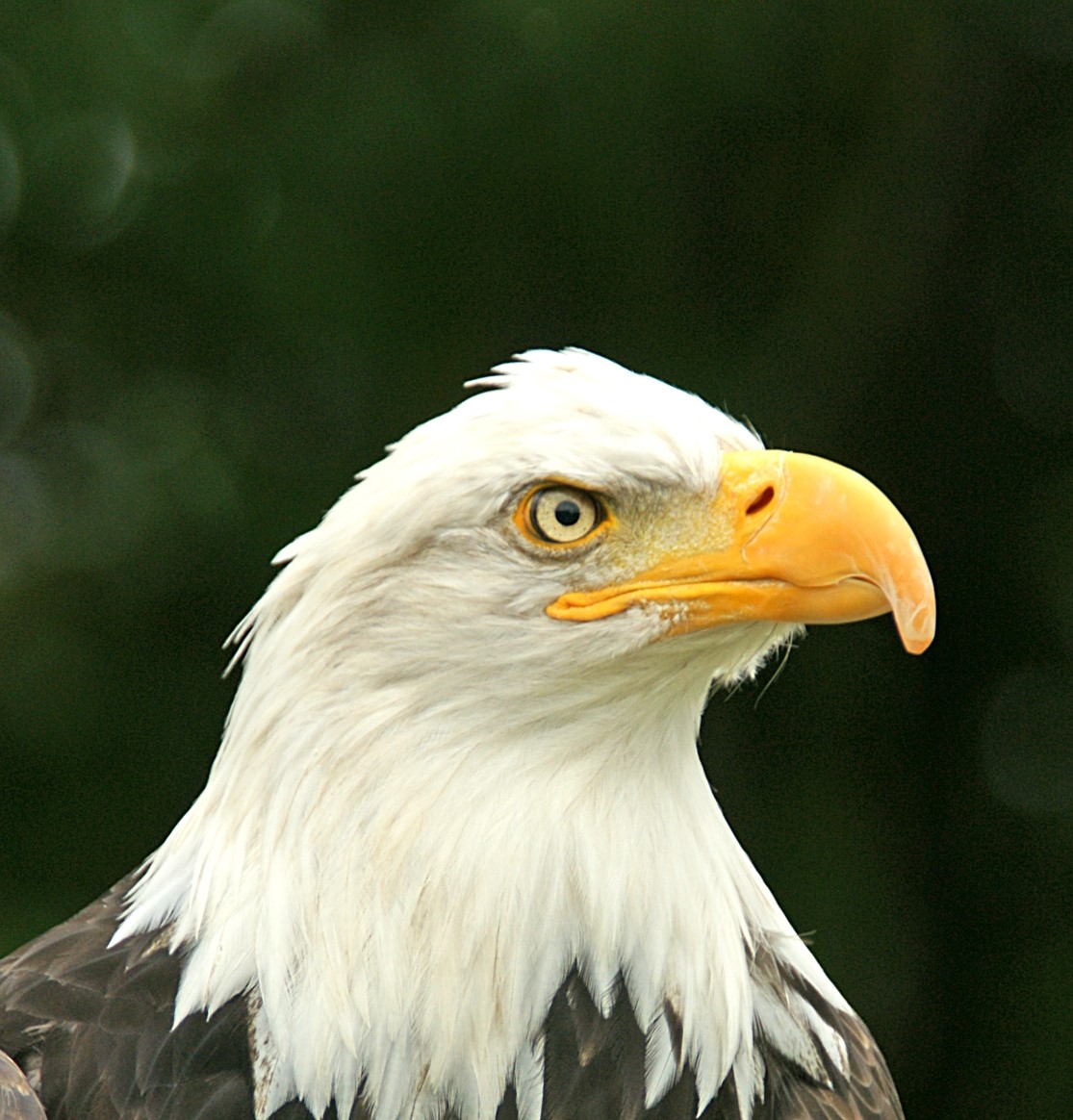Current Distribution Rangewide
Distribution is entirely within North America, including Canada, Alaska, and northwest Mexico [1].
Known Populations in San Diego County
Annual winter visitor to Lake Henshaw, Cuyamaca, Corte Madera, and Moreno [2].
List Status
BEPA/ FP [3].
Habitat Affinities
Prefers habitats with low human disturbance, but will tolerate human activity when feeding availability is high [4, 8]. Nests are generally built on cliffs, the tops of very tall conifer or deciduous trees, and close by fishable waters, i.e. lakes, rivers, reservoirs, marshes, or coastal waters. Nesting habitats are generally located in dense forested areas adjacent to large bodies of water [1]. Winters in temperate zones and dry climates in western valleys [5].
Taxonomy and Genetics
Generally divided into two subspecies, H.l. alascanus, which is the larger northern species, and H.l. leucocephalus, the smaller southern species [6, 7].
Seasonal Activity
Year-long, diurnal activity. Breeds from late January through August, with peak occurrences in March through July [9]. In winter eagles migrate to areas with large trees, easily accessible branches, and ice-free fishable waters away from human activity.
Life History/Reproduction
Known to build some of the largest nest, generally 5-6 feet in diameter and 2-4 feet tall [11]. Both sexes will build the nest, which can take up to 3 months to construct and will typically be used every year. They generally use tall, sturdy conifers or deciduous in southern regions that overlook the forest canopy, enabling them easy flight access and good visibility [11]. In areas lacking trees they will use ground sites or cliff faces. Nesting eagles clutch 1-3 eggs, with one brood per year. Incubation can last approximately 35 days and nest 60-100 days. Bald eagles become fully feathered at 10 weeks and will often be mistaken for golden eagles as their feathers are mostly dark brown. Once they mature and reach adult plumage, within 4-5 years they develop their iconic bald eagle characteristics. Can live 20-30 years in the wild and even longer in captivity [5].
Diet and Foraging
Bald eagles eat fish, reptiles, birds, mammals, invertebrates, carrion, and may even eat garbage [12, 13].
Threats
Humans pose the greatest threat to bald eagles through habitat destruction, pesticide use, and poaching [14, 15].
Literature Sources
[1] Buehler, D. A. 2000. Bald Eagle (Haliaeetus leucocephalus). In The Birds of North America, No. 564 (A. Poole and F. Gill, eds.). The Birds of North America Online, Ithaca, New York.
[2] Unitt, P. 1984. The birds of San Diego County. San Diego Soc. Nat. Hist. Mem. no. 13:1-276.
[3] California Department of Fish and Wildlife, Natural Diversity Database. July 2017. Special Animals List. Periodic publication. 51 pp.
[4] Livingston, S.A., C.S. Todd, W.B. Krohn and R.B. Owen, Jr. 1990. Habitat models for nesting bald eagles in Maine. J. Wildl. Manage. 54(4):644-653.
[5] Bailey, R. G. 1989. Explanatory supplement to ecoregions map of the continents. Environment. Conserve. no. 16:307-309.
[6] American Ornithologists' Union. 2004. The A.O.U. check-list of North American birds, 7th edition, [Online]. American Ornithologists Union. Available: http://www.aou.org/checklist/index.php3
[7] Johnsgard, Paul A. 1990. Hawks, eagles, and falcons. Washington, DC: Smithsonian Institution Press. 403 p.
[8]
[9] Steenhof, K. 1976. The ecology of wintering Bald Eagles in southeastern South Dakota. Master's Thesis, Univ. of Missouri, Columbia.
[10] Southern, W.E. 1963. Winter populations, behavior, and seasonal dispersal of bald eagles in northwestern Illinois. Wilson Bull. 75(1):42-55.
[11] Buehler, David A.; Fraser, James D.; Seegar, Janis K. D.; [and others]. 1991. Survival rates and population dynamics of bald eagles on Chesapeake Bay. Journal of Wildland Management. 55(4): 608-613.
[12]
[13] Herrick, F. H. 1932. Daily life of the American eagle: early phase. Auk no. 49:307-323.
[14] Stalmaster, M. V. 1987. The Bald Eagle. New York: Universe Books.
[15] Sherrod, S. K., C. M. White and F. S. L. Williamson. 1976. Biology of the Bald Eagle on Amchitka Island, Alaska. Living Bird no. 15:145-182.
[16] Nisbet, I. C. T. 1989a. "Organochlorines, reproductive impairment, and declines in Bald Eagle Haliaeetus leucocephalus populations: mechanisms and dose relationships." In Raptors in the modern world., edited by B. U. Meyburg and R. D. Chancellor, 483-489. Berlin, Germany: World Working Group for Birds of Prey.
[17] Wiemeyer, S. N., C. M. Burick and C. J. Stafford. 1993. Environmental contaminants in Bald Eagle eggs-1980-1984-and further interpretations of relationships to productivity and shell thickness. 24:213-227.

